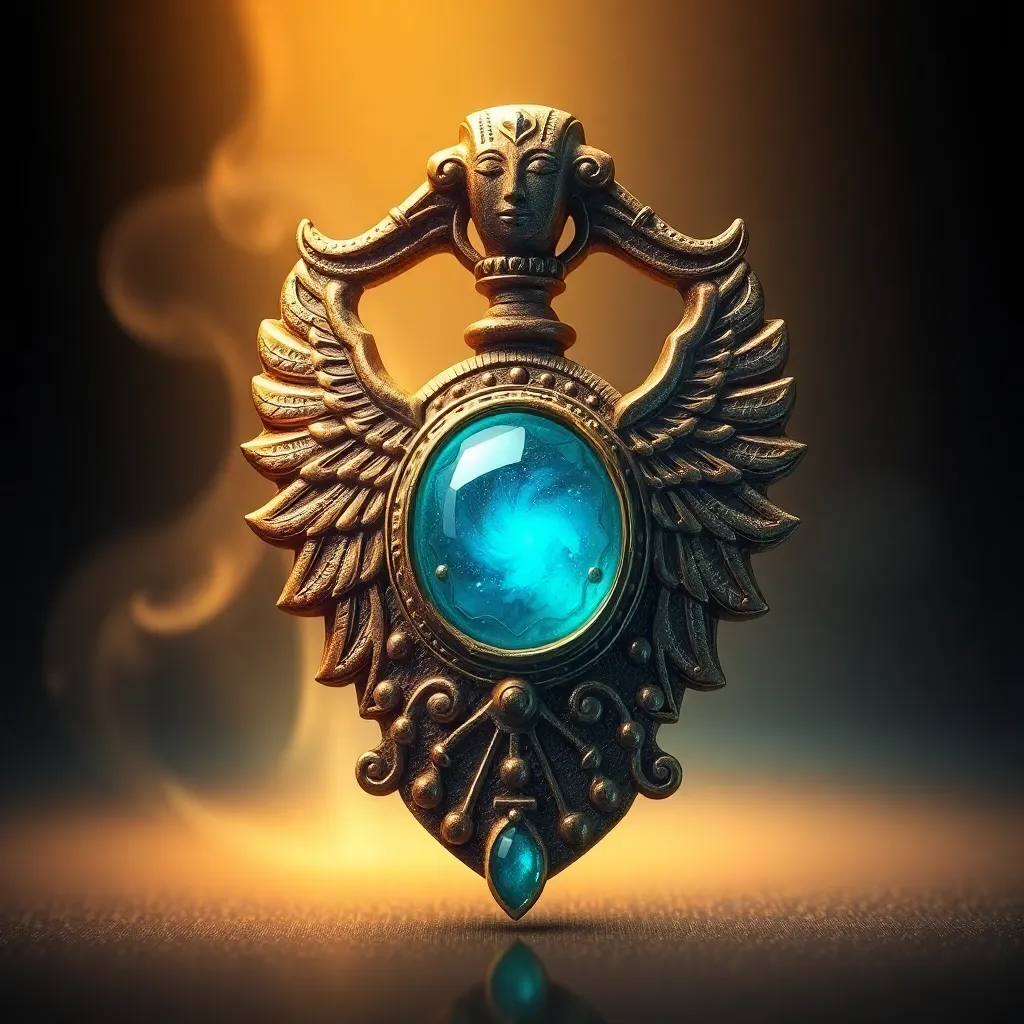The Amulet of Aset: The Goddess of Magic and Healing
I. Introduction
Aset, also known as Isis, is one of the most revered deities in ancient Egyptian mythology. Her attributes encompass the realms of magic, healing, motherhood, and protection, making her a central figure in the Egyptian pantheon. The Amulet of Aset symbolizes her power and offers insight into her significance within ancient Egyptian culture.
This article aims to explore the historical context of Aset, the symbolism of her amulet, her association with magic and healing, and the amulet’s modern relevance. By delving into these aspects, we can appreciate the enduring legacy of Aset and her amulet in both ancient and contemporary spirituality.
II. Historical Context of Aset
Aset’s origins can be traced back to the early dynastic period of Egypt, where she began as a local goddess in the Nile Delta. Over time, her worship spread throughout Egypt and beyond, evolving into one of the most significant deities in the Egyptian pantheon.
Aset played a crucial role in various myths, most notably in the story of Osiris, her husband, and brother. After Osiris was murdered by Set, Aset’s resilience and magic allowed her to resurrect him, emphasizing her powers and importance. This narrative established her as a protector of the dead and a symbol of eternal life.
Her influence permeated ancient Egyptian culture, as she was worshipped by all classes of society. Temples dedicated to Aset were built across the land, and she was often invoked in funerary rites and domestic affairs, highlighting her integral role in both public and private life.
III. Symbolism of the Amulet
The Amulet of Aset is typically depicted as a figure of the goddess herself, often seated on a throne, with a throne-like headdress and holding a sistrum, a musical instrument associated with fertility and joy. This amulet served as a powerful talisman for protection and empowerment.
Symbolically, the amulet represents:
- Protection: Offering safety to the wearer against malevolent forces.
- Healing: Signifying Aset’s abilities to heal and restore health.
- Fertility: Celebrating life and the nurturing aspects of motherhood.
In ancient rituals, the Amulet of Aset was used in ceremonies to invoke the goddess’s blessings, often placed in tombs to ensure protection in the afterlife or worn by individuals to attract her favor.
IV. The Goddess of Magic
Aset is often recognized as the goddess of magic and sorcery. Her mastery over magical arts is evident in numerous myths, where she outsmarts adversaries and protects her loved ones through her skills.
Key myths highlighting her magical prowess include:
- The resurrection of Osiris, where she used her magical abilities to bring him back to life.
- Her role in protecting her son, Horus, from Set, utilizing spells and incantations to safeguard him.
The Amulet of Aset was believed to facilitate the invocation of her magical protection, allowing the wearer to harness her powers in their own life.
V. The Goddess of Healing
Aset’s healing abilities are deeply embedded in her mythology. She is often depicted as a nurturing mother figure, healing the sick and providing comfort to those in distress. Her connection to healing is symbolized by her association with essential herbs and remedies used in ancient Egyptian medicine.
Historical practices involving the Amulet of Aset included:
- Wearing the amulet during sickness to attract Aset’s healing powers.
- Using the amulet in rituals aimed at curing ailments, often combined with herbal remedies.
The intersection of magic and healing in Aset’s lore illustrates her multifaceted nature and the belief that her magical prowess contributed to her healing abilities.
VI. The Amulet in Modern Spirituality
In recent years, there has been a revival of interest in ancient Egyptian spirituality and its practices. The Amulet of Aset has found a place in contemporary spiritual practices, often associated with empowerment, healing, and protection.
Modern uses of the Amulet of Aset include:
- As a talisman in rituals for spiritual growth and protection.
- In meditation practices, where individuals seek to connect with Aset’s energy.
- As a decorative piece that resonates with personal spiritual beliefs.
The amulet’s role in modern magical practices emphasizes the ongoing relevance of Aset’s legacy in today’s spiritual landscape.
VII. Cultural Legacy
The influence of Aset and her amulet extends beyond ancient Egypt, permeating art, literature, and popular culture. She has inspired countless artistic representations, from ancient sculptures to modern illustrations.
In popular culture, Aset has appeared in:
- Books and films exploring ancient mythology.
- Video games that incorporate Egyptian themes and deities.
- Fashion and jewelry, where her image is used for empowerment and protection.
Ongoing reverence for Aset is evident in various spiritual communities that honor her as a symbol of strength, magic, and healing.
VIII. Conclusion
The Amulet of Aset holds a significant place in the tapestry of ancient Egyptian mythology, representing the goddess’s power, wisdom, and nurturing spirit. Aset’s legacy endures, reminding us of the rich cultural heritage of Egypt and the timeless themes of magic and healing.
As we reflect on the importance of Aset and her amulet, we are encouraged to explore the vast and intricate world of ancient Egyptian mythology, embracing its lessons and wisdom that resonate even in the modern age.




